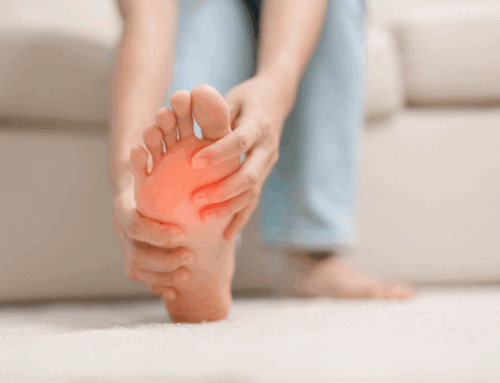In our fast-paced, technology-driven world, we often overlook one of the most fundamental aspects of our health and well-being: our posture.
The way we carry and hold ourselves throughout the day can have far-reaching effects on our physical and mental health, influencing everything from our mood to our productivity to our comfort. Yet, many of us unknowingly slouch our way through life, unaware of the potential consequences.
Some of the most common reasons for poor posture include:
- Working a daily desk job or a standing job that requires hours on or off your feet
- Consistent device use
- Injury, such as strains, sprains, inflammation
- Stress, anxiety, and fatigue
- Adhering to a sedentary lifestyle
- Muscle weakness
- Improper or poor footwear, including wearing high heels regularly
- An underlying condition, such as a disc herniation or arthritis
Today, we explore how to overcome these obstacles, why good posture matters, and how it can transform your daily life. We’ll also give you four tips for improving your posture starting now.
Why You Need Proper Posture for Your Quality of Life
Whether you’ve been involved in a sports accident, suffer from sciatica, or have negatively educated your body to slump over a desk, poor posture can interfere with your quality of life without you even realizing it.
Many don’t understand the importance of good posture and how it can affect them.
Good posture is essential because when the body is balanced and aligned, you reap many rewards, including:
- Reduced risk of back pain and neck pain
- Improved breathing
- Improved circulation of healthy blood, nutrients, and oxygen
- Healthier blood vessels and nerves
- Less frequent pain, discomfort, incorrect movement patterns, and injuries, including chronic conditions such as arthritis
- Better digestion
- Reduced risk of joint degeneration and less frequent abnormal wear and tear on the joints
- Healthier and safer soft tissues (muscles, ligaments, tendons, and other connective tissues)
- Increased energy levels
- Enhanced core strength
- Reduced stress on the ligaments and other soft tissues surrounding the spine
- Improved spinal alignment
- An efficient musculoskeletal system and spine
- Improved balance and coordination
- Decreased headaches
- Increased confidence and mood
- Improved concentration and productivity
- Enhanced athletic performance
- Reduced risk of muscle strain
- Improved appearance and presence
As you can see, a healthy posture can create quite an impact. This means unhealthy posture can, too.
4 Ways to Start Improving Your Posture Today
So, how do you get the coveted healthy posture we all seek? Here are four tips to implement today.
Set reminders
Use your phone or computer to set regular daily reminders to check and correct your posture. This will help build awareness and create a habit of maintaining good posture.
Strengthen core muscles
Focus on exercises that target your core, such as planks, bridges, and bird dogs. A strong core provides better support for your spine and helps maintain proper alignment.
Adjust your workspace
Ensure your desk, chair, and computer screen are at the correct height. Your feet should be flat on the floor, knees at a 90-degree angle, and your screen at eye level to prevent hunching.
Pro tip: Keep your wrists straight and parallel to the ground to help prevent carpal tunnel syndrome. Regularly bent wrists put undue stress on the tissues and can lead to pain and injury.
Practice the wall test
Stand with your back against a wall, making sure your head, shoulders, and buttocks touch it. This position helps you understand how proper posture feels and serves as a quick reset throughout the day.
Other good posture tips to start now include:
At your desk:
- Sit up straight, avoiding forward slumping
- Keep your shoulders relaxed and pulled back slightly
- Ensure your feet are flat on the floor
When using handheld devices:
- Hold the device at eye level to avoid “text neck”
- Take frequent breaks to stretch your neck and shoulders
- Consider using a stand or holder for tablets
In the car:
- Position the seat more upright to support your spine
- Adjust the headrest to support your head properly
- Use lumbar support if possible
Footwear choices:
- Limit time in high heels
- Opt for supportive, comfortable shoes when possible
- Consider orthotic inserts if you have foot issues
In bed:
- Use a firm mattress that supports your spine
- Sleep with your head in line with your spine
- Consider a supportive pillow that maintains proper neck alignment
When standing:
- Stand up tall with your shoulders back
- Engage your core muscles
- Distribute your weight evenly on both feet
During physical activity:
- Be mindful of your posture during exercise
- Engage in activities that strengthen core and back muscles
- Practice exercises that improve flexibility and body awareness
Learn How to Support Your Posture at Whitefish Chiropractic
Leading a healthy lifestyle can be intimidating if you’re just starting, but these tips are easy adjustments that can pay off big time.
If your poor posture hinders your lifestyle, allow our chiropractic care team to help get your body balanced and re-educated with a thorough evaluation and our safe, natural chiropractic solutions.
Chiropractic services we use to treat poor posture and conditions related to poor posture include:
- Chiropractic adjustments
- Targeted exercises and stretches
- Active Release Technique (ART)
- Graston Technique
- Kinesio taping
- Dry needling
- Shockwave therapy
- And others
Our Whitefish Chiropractic clinics are located in Whitefish, Columbia Falls, and Kalispell for your convenience. Schedule your appointment today, and let’s get you moving, standing, and sitting safely.




